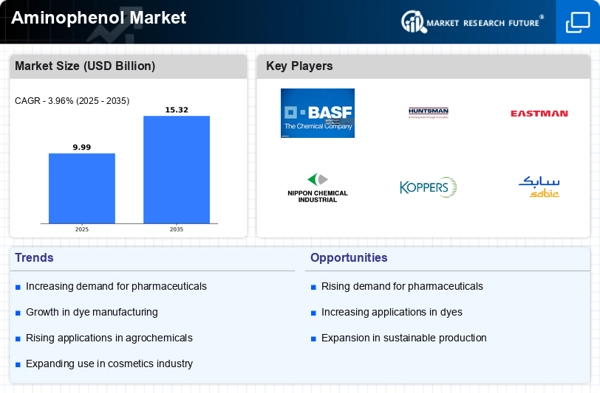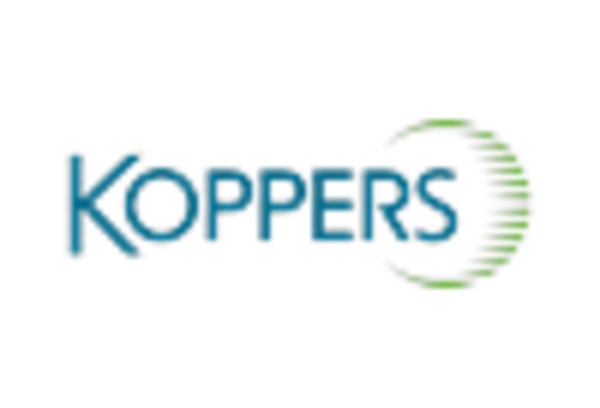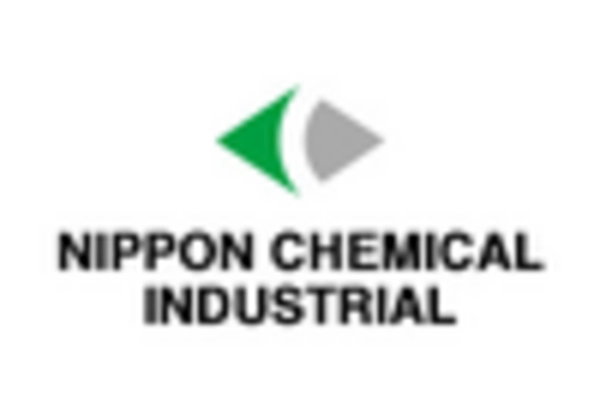Expansion in Agrochemicals
The Aminophenol Market is poised for growth due to its increasing utilization in agrochemicals. Aminophenol derivatives serve as key intermediates in the synthesis of herbicides, fungicides, and insecticides, which are essential for modern agriculture. The Aminophenol is anticipated to reach USD 300 billion by 2025, with a significant portion attributed to the demand for effective crop protection solutions. This trend suggests a robust opportunity for the Aminophenol Market, as agricultural producers seek innovative and efficient chemical solutions to enhance crop yields. Additionally, the rising focus on food security and sustainable farming practices may further drive the demand for agrochemical products, thereby positively impacting the Aminophenol Market.
Rising Demand in Electronics
The Aminophenol Market is witnessing a surge in demand from the electronics sector, particularly in the production of electronic components and materials. Aminophenol derivatives are utilized in the manufacturing of resins and adhesives, which are critical for assembling electronic devices. The electronics market is projected to grow at a compound annual growth rate of around 6% through 2025, driven by advancements in technology and increasing consumer electronics consumption. This trend indicates a promising outlook for the Aminophenol Market, as manufacturers in the electronics field seek reliable and efficient materials to enhance product performance and durability. The integration of aminophenol compounds in electronic applications may also lead to innovations in product design and functionality.
Growth in Personal Care Products
The Aminophenol Market is benefiting from the rising incorporation of aminophenol compounds in personal care products. These compounds are utilized in hair dyes, skin care formulations, and other cosmetic applications due to their ability to provide color and enhance product efficacy. The Aminophenol is projected to grow significantly, with an expected value of over USD 500 billion by 2025. This growth is likely to be fueled by increasing consumer awareness regarding personal grooming and beauty standards. As manufacturers strive to innovate and offer high-quality products, the demand for aminophenol-based ingredients in the personal care sector is expected to rise, thereby positively influencing the Aminophenol Market.
Increasing Use in Dyes and Pigments
The Aminophenol Market is experiencing a notable increase in demand due to its application in dyes and pigments. Aminophenol derivatives are essential in the production of various colorants used in textiles, plastics, and coatings. The market for dyes is projected to grow at a compound annual growth rate of approximately 5% over the next few years, driven by the expanding textile and automotive industries. This growth in dye applications is likely to bolster the Aminophenol Market, as manufacturers seek high-quality intermediates to meet the rising standards of colorfastness and vibrancy. Furthermore, the shift towards eco-friendly dyes may also influence the market, as Aminophenol compounds can be modified to create more sustainable options, thus enhancing their appeal in the market.
Regulatory Support for Chemical Manufacturing
The Aminophenol Market is likely to benefit from favorable regulatory frameworks that support chemical manufacturing. Governments are increasingly recognizing the importance of the chemical sector in driving economic growth and innovation. Initiatives aimed at promoting sustainable practices and reducing environmental impact may encourage investments in the Aminophenol Market. For instance, regulations that incentivize the use of eco-friendly chemicals could lead to increased demand for aminophenol derivatives that meet these standards. Furthermore, as industries adapt to comply with evolving regulations, the Aminophenol Market may experience growth opportunities as manufacturers seek compliant and innovative solutions to meet market demands.

















Leave a Comment